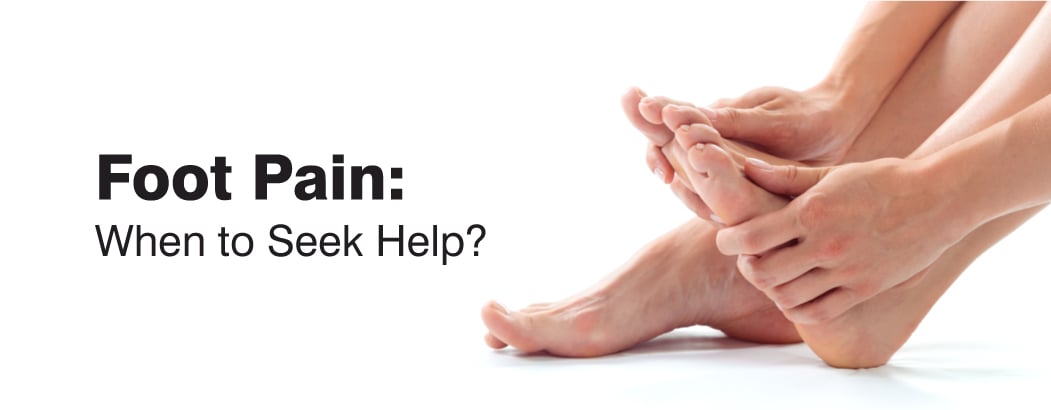What is the reason for foot pain?
July 21, 2023

What is foot pain?
Foot pain is the sensation of discomfort, soreness, or irritation felt in the foot region, which encompasses the toes, arches, heels, and soles. The feet are intricate structures consisting of bones, muscles, tendons, ligaments, and joints, all working in unison to sustain our body weight, aid in movement, and uphold balance. Due to the complexity of this system, it’s no surprise that foot pain can stem from various factors.
Causes of foot pain
There are various factors that can lead to foot pain.
- Wearing shoes that do not fit properly or lack appropriate arch support can alter the way the feet move, causing discomfort.
- Engaging in activities that require prolonged standing, walking, running, or jumping can strain the muscles and ligaments in the feet, leading to pain.
- Accidents, falls, and sports-related incidents can result in injuries like fractures, sprains, and strains, causing acute pain.
- Certain medical conditions can also contribute to foot pain.
- Additionally, nerve disorders such as Morton’s neuroma and neuropathy can cause sensations like tingling, numbness, and pain in the feet.
Symptoms of Foot Pain
Chronic foot pain can be caused by various conditions, including arthritis.
- The symptoms of foot pain can differ depending on the underlying cause, but common indicators include swelling, redness, stiffness, numbness or tingling, changes in skin colour, and pain that ranges from dull aches to sharp, shooting pains.
- Proper diagnosis of foot pain requires a combination of physical examination, medical history review, and sometimes imaging tests, such as X-rays, MRIs, or CT scans.
- Footwear and obesity are two main causes of foot pain, with ill-fitting shoes and excess weight putting extra stress on the feet and increasing the risk of conditions like plantar fasciitis and bunions.
When it comes to foot pain, there are various factors that can contribute to it. For instance, stress fractures can be a culprit. Additionally, certain medical ailments like diabetes and rheumatoid arthritis can cause nerve damage and inflammation in the feet, leading to discomfort. As we grow older, degenerative conditions like osteoarthritis may become more prevalent and result in chronic foot pain.
How to ease foot pain at home?
If you are experiencing foot pain, there are some things you can do at home to alleviate it. Depending on the cause and type of pain, you may benefit from these tips:
- Applying ice to the affected area
- Taking over-the-counter pain relievers
- Using foot pads to prevent rubbing
- Elevating the foot to reduce swelling
- Resting the foot as much as possible
However, if your foot pain is sudden and severe due to a recent injury, or you cannot put weight on your foot, it’s important to see a doctor as soon as possible. Additionally, if you have a medical condition that affects blood flow, an open wound, or other signs of inflammation, or if you have a fever along with foot pain, seek medical attention.
When to see a doctor?
If you experience foot pain regularly, you may know the causes and how to manage it. However, there are times when you should consult a podiatrist immediately, such as if the pain appears suddenly and is severe if it is due to a recent injury, or if you are unable to put any weight on the affected foot. You should also see a doctor if you have a medical condition that affects blood flow and causes foot pain if the area causing pain has an open wound or shows signs of inflammation, or if you have a fever along with foot pain.
How to treat foot pain?
To treat foot pain, the appropriate treatment will depend on the underlying cause. For some individuals, using shoe inserts can bring significant relief and can be obtained either over the counter or through prescription. Others may require more intensive interventions such as a cast, wart removal, surgery, or physical therapy. To prevent chronic foot pain, it is essential to choose comfortable, roomy, and well-cushioned shoes and avoid high heels and narrow-toe shoes. It is also crucial to maintain a healthy weight, stretch your toes before engaging in physical activities, and practice good foot hygiene. Always wear footwear when outside to protect your feet. While foot pain is common, it is not something that should be considered a regular part of life. If foot pain persists for more than a week or two despite at-home treatment, medical assistance should be sought.
People also ask
1. What are the main causes of foot pain?
Foot pain can result from injuries, overuse, foot conditions (like plantar fasciitis), arthritis, nerve problems, or poor footwear.
2. How do you know if foot pain is serious?
Foot pain could be serious if accompanied by severe swelling, inability to walk, numbness, persistent pain, or non-healing sores.
3. Does diabetes cause foot pain?
Yes, diabetes can cause foot pain due to neuropathy (nerve damage) and poor circulation.
4. What deficiency causes foot pain?
Insufficient levels of vitamin D can result in a variety of negative effects, such as osteoporosis, increased danger of falling, fractures, and discomfort in muscles and bones. Individuals with vitamin D deficiency may experience stress fractures in the metatarsal bones and ankle, as well as overall foot pain.
5. Does hot water relieve foot pain?
If you have been experiencing foot pain for more than four weeks, hot water may be more effective than cold water. While cold water is useful for managing acute pain, hot water is better for chronic pain. In certain cases of chronic pain, a contrast bath using both warm and cold water may be beneficial.
6. Can I soak my feet in regular salt?
Any solution containing salt, whether regular table salt or Epsom salt, will help lessen joint inflammation. It will ease any joint pain you experience when applied with hot water. But be careful not to burn your leg—warm water will have the same effect.
7. How do you get rid of foot pain at night?
To decrease inflammation, apply ice. Put on footwear that supports your arches and leaves room for your toes. Numerous types of foot pain have their roots in improperly fitting footwear. To equally distribute your weight and prevent putting too much strain on one spot, sleep flat on your back.







